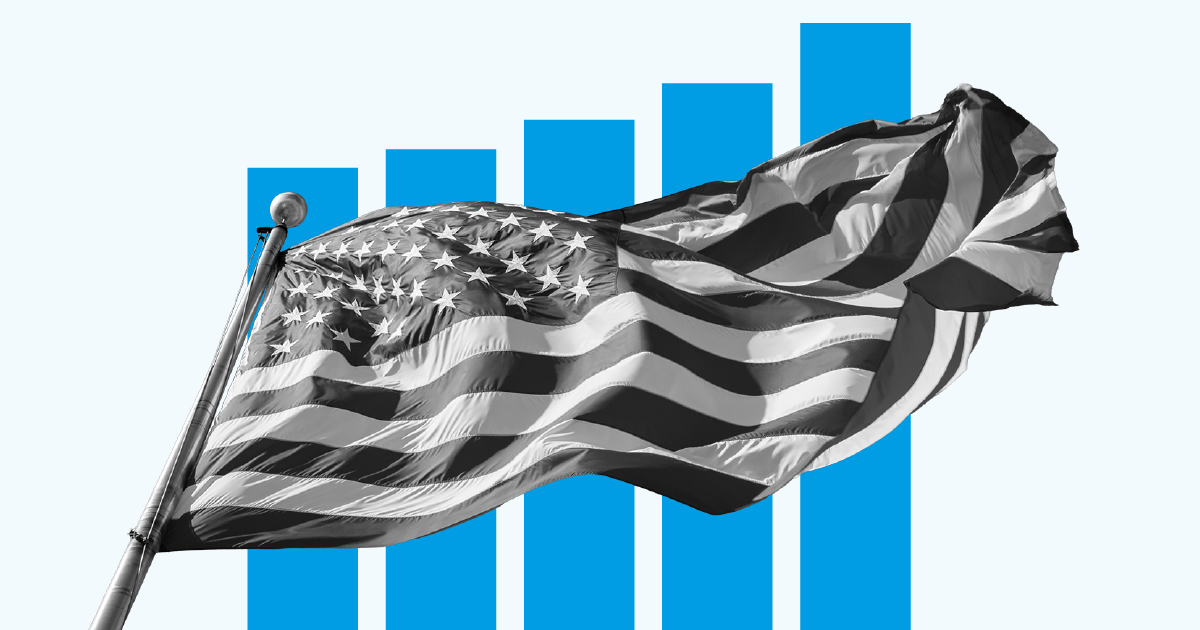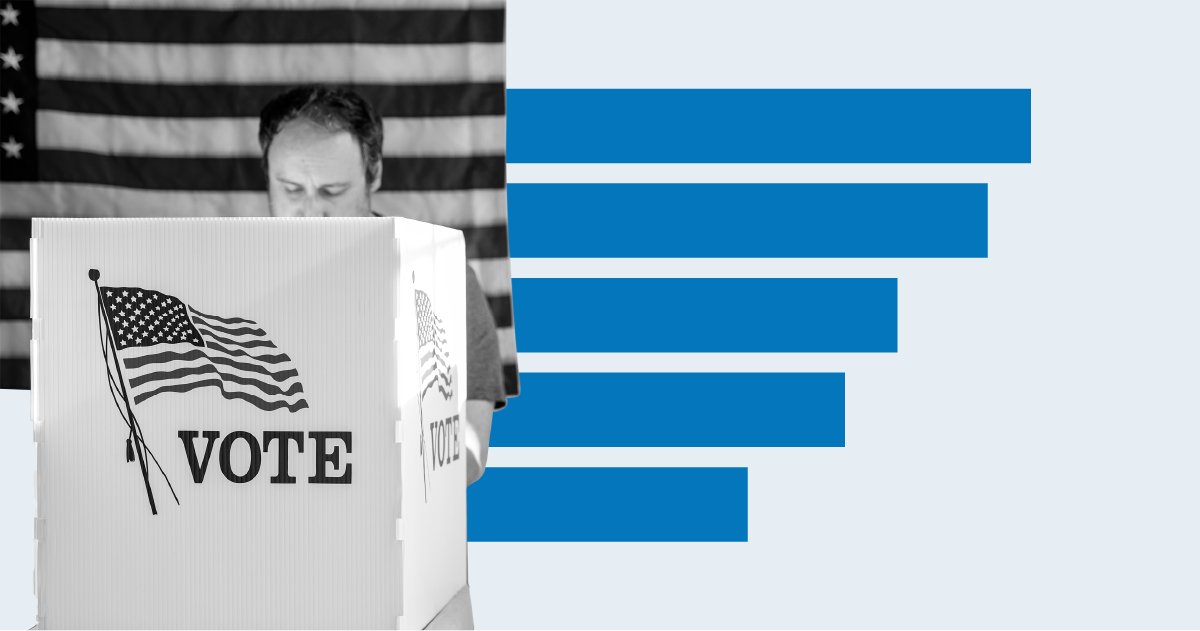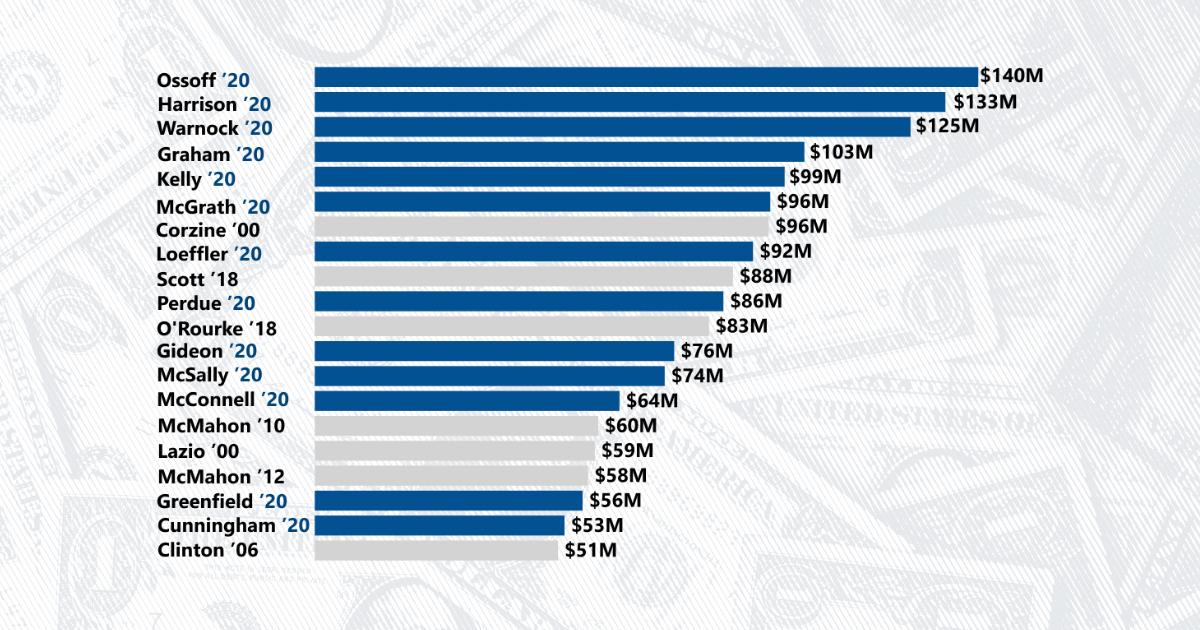Government
The October 2019 Democratic debate and the data behind it

The debt limit, or debt ceiling, is a restriction on how much the federal government can borrow to pay its bills and allocate funds for future investments. When Congress appropriates or directs government money to be spent, the government is obligated to pay those funds, creating a bill it must pay.
This bill, also known as the national debt[1], is the amount of money the federal government has already borrowed to cover outstanding expenses in past fiscal years. The national debt is composed of debt held by the public in the form of government securities and intragovernmental debt, debt which one part of the federal government owes to another.
The debt ceiling is currently set at $31.46 trillion.
On May 1, 2023, Treasury Secretary Janet Yellen informed Congress that the government could run out of cash as early of June 1 if the debt ceiling is not raised or suspended in time.
According to the Treasury Department, failing to raise the debt ceiling would have “catastrophic economic consequences,” most likely resulting in a financial crisis as the country defaults on its legal obligation to repay its national debt. This threat is especially harmful today as the US continues to recover from its most recent recession during the pandemic.
According to a letter sent from Treasury Secretary Janet Yellen to House Speaker Kevin McCarthy on January 13, 2023, the debt ceiling was projected to reach the statutory limit on January 19.
When the national debt exceeds the debt ceiling, the federal government cannot increase its outstanding debt any further. Therefore, the Treasury Department can use extraordinary measures authorized by Congress to manage the federal government’s finances and remain under the debt limit.
These measures can include suspending investments into government saving, retirement, and health plans, halting the sale of Treasury bonds and other government securities, or shifting money between government agencies to pay off intragovernmental debts.
If the Treasury Department is not able to borrow additional money or reduce expenses to stay under the debt ceiling, the US could default on outstanding loans and its credit rating may be downgraded by credit rating groups in response. This would negatively impact the US economy and international financial markets.
Since 1960, the US has either raised, extended, or revised the debt limit 78 separate times, and has never failed to raise the debt ceiling.
Although the country has always placed limits on borrowing, the US managed those limitations on a nearly case-by-case basis for the first 150 years. This practice became cumbersome as the country’s government systems increased in complexity. In the 1920s and 30s, Congress delegated some authority to the Treasury Department to manage the US borrowing limits, but it did not solve the problem.
In 1939, Congress passed a law that removed various separate limits on government debt and replaced it with a general restriction, which established the debt ceiling at an initial limit of $65 billion.
Budget resolutions and the federal debt limit have been connected before although it is not required. From 1974 to 1994, Congress passed budget resolutions that raised the debt limit equal to new spending. In 1995, Congress listed the budget resolution and debt limits as separate items. Prior to this, Congress increased the debt limit annually as needed.
In April 2002, the government reached the debt limit, but Congress did not raise it as it had in the past. The Treasury Department used extraordinary actions, such as withholding payments to federal trust funds to allow the government to keep functioning. On June 27, 2002, Congress raised the limit by $450 billion. The affected trust funds were paid back with interest after the debt limit was increased.
A pattern emerged over the next seven years. As the US reached the debt limit annually, Congress struggled to agree on raising the limit. The Treasury Department continued to used extraordinary actions to keep the government going. Eventually, Congress would increase the debt ceiling to avoid defaulting on its obligations.
In fiscal year 2008, Congress stopped agreeing to pass annual debt limit increases and passed short term limit increases instead. In 2011, after multiple attempts to raise the debt limit failed, Congress passed the Budget Control Act. The law raised the debt limit but imposed automatic, across-the-board cuts to future spending by the same amount the debt limit was increased.[2] Even with those cuts, overall spending in the US increased yearly. The last time Congress actively increased the debt limit was in 2011, raising it by $2.1 trillion to $16.394 trillion.
Since 2013, Congress instead has passed temporary suspensions of the debt limit. When the suspensions end, the debt limit resets to the debt amount at the time. The first suspension, from February to May of 2013, led to another round of extraordinary actions by the Treasury Department. In fall of that year, Congress suspended the limit again.
The debt suspension measure ended in July 2021 and the Treasury Department used extraordinary measures to maintain debt levels. This resulted in an increase of $6.5 trillion, the greatest hike to the debt ceiling in its history, more than three times the size of the debt ceiling raise required to end the government shutdown in 2012.
The debt ceiling was further raised by near $3 trillion more before the end of 2021, bringing the new limit to $31.4 trillion.
National debt levels have approached the debt limit in January of 2023. Treasury Secretary Janet Yellen’s request to impose extraordinary measures to once again limit the rising debt before any potential default indicates that the US needs to increase the debt ceiling.
Following this request, the Treasury Department began to implement these extraordinary measures on January 19, 2023.
Learn more about government spending, revenue, and debt with the USAFacts annual 10-K report.
Failing to raise the debt limit can cause the government to shut down due to a lack of funds. This can have a number of consequences such as furloughed government employees and the closing of national parks and other government facilities.
Before the 1980s, funding gaps in which Congress failed to appropriate new federal funds did not majorly effect on government operations. Typically, government agencies continued to operate on the expectation that funding for all time worked would be provided eventually.
However, in 1980 and 1981, US Attorney General Benjamin Civiletti wrote several legal documents that prohibited government agencies from authorizing expenditures during a funding gap.[3] As a result, 10 of the nation's 14 funding gaps since 1982 have let to the government being shutdown.
However, funding gaps do not account for all debt ceiling crises, since they would require US spending to have already exceeded the debt limit. Congress and the White House have used the renewal of the debt limit as a negotiating tool during budget debates, oftentimes pushing for spending cuts.
To get a full picture of the US economy, read more about the national debt and the strength of the US dollar, and get the data directly in your inbox by signing up for our newsletter.
The US Treasury Department uses the terms “national debt,” “federal debt,” and “public debt” interchangeably.
These automatic cuts are also called "sequestration".
Exemptions are made for government employees, such as military and law enforcement personnel, for the purposes of national security.
Government
Government
Government
Government
Newsletter
Keep up with the latest data and most popular content.


